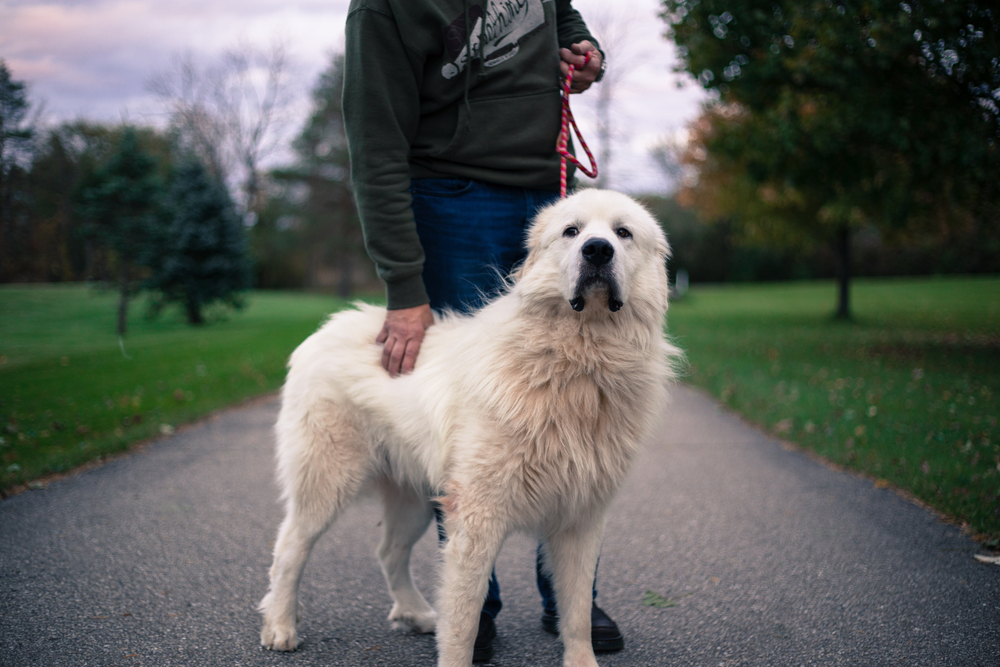[ad_1]
There is an old urban legend that says one year of a human’s life is equivalent to seven dog years, and as simple as that calculation is (Dogs Age x 7 = Human Equivalent), it’s not entirely accurate. Depending on its breed and size, a 7-year-old dog would be 44–56 in human years, but determining a dog’s age in human years isn’t quite that simple. Read on to learn how to calculate dog years to human years, as well as the science behind the formulas.

| Size: | Age in human years: |
| Small breed (<20 lbs or less): | 44 years |
| Medium breed (21 to 50 lbs): | 47 years |
| Large breed (51 to 100 lbs): | 50 years |
| Giant breed (100+ lbs): | 56 years |
Source: Almanac.com
How to Calculate Dog Years to Human Years
While there is no 100% accurate dog-to-human year calculator, pet owners have a few options for calculating their dog’s age in human years.
The American Veterinary Medical Association (AVMA) suggests using the following general guidelines for estimating a pup’s human age equivalent:
- For medium-sized dogs, their first year of life is equal to approximately 15 human years.
- The second year is equal to around nine human years.
- Each subsequent dog year after that would equal approximately five years for a human.

This method accounts for the fact that dogs age at different rates depending on their size and breed.
Alternatively, a study from researchers at the University of California San Diego (UCSD) School of Medicine found a formula recently that they believe to be more accurate. The formula is based on how methyl group patterning changes in dog and human genomes as they are (more on this in the next section below).
While there is no calculator for this formula, researchers created an easy-to-use graph that can provide some insight into a dog’s age in human years.1 According to the study, a one-year-old dog is equivalent to around 30 human years. When they’re four, they’re similar to a 52-year-old human. By age seven, aging tapers off and moves at a much slower rate.
While the UCSD formula can be helpful, it lacks enough variables for conclusive results.

What’s the Science Behind Dog vs. Human Years?
Mammals go through similar physiological stages during their lifespan.
The DNA of humans and dogs doesn’t change much throughout our lives, but the chemical marks (also known as methylation marks) on the DNA do shift over time.
As we age, our DNA undergoes epigenetic changes due to a process known as methylation. These changes offer clues to a genome’s age, much like the wrinkles on our faces or grays in our hair.
The UCSD study looked at the changes in chemical marks on the DNA in Labrador Retrievers and compared the changes to those seen in humans.2 The results suggest that the relationship is not as perfectly linear as the 1:7 myth suggests. Dogs mature quickly during the first five years of their lives, and then the aging process slows down quite a bit after that.
This study found that a one-year-old puppy is similar physiologically to a 30-year-old human. However, it’s important to remember that this formula is missing some of the variables necessary for conclusive results.

The Life Stages of a Dog
Dogs do not have a single age at which they reach different life stages, as there’s a significant variance in their sizes. Larger breeds have shorter lifespans, but reach sexual maturity much later than their smaller counterparts, so they’ll achieve milestones at a much different pace.
There are four distinct life stages a dog will go through before reaching the end of their life.
- Puppy (Birth to 6 to 9 months)
- Young Adult (6 to 9 months to 3 to 4 years)
- Mature Adult (3 to 4 years to the beginning of the last 25% of estimated lifespan)
- Senior (Last 25% of estimated lifespan to end of life)
Many changes occur during the puppy and young adult stages, as the dogs undergo all of their physical and social growth during this phase.

Life Span by Breed Size
| Size: | Average life span: |
| Small breed (<20 lbs or less): | 10–15 years |
| Medium breed (21 to 50 lbs): | 10–13 years |
| Large breed (51 to 100 lbs): | 8–12 years |
| Giant breed (100+ lbs): | 8–10 years |
Source: American Kennel Club

Key Factors That Affect the Dog’s Aging Process
Genetics is the most significant factor in how fast a dog ages. Some breeds of similar size age slower than others due to specific genetic markers and traits. Additionally, some breeds are prone to developing health problems that can affect their life span, but not necessarily their rate of aging. For example, giant breed dogs tend to have a much shorter lifespan than small dogs, often due to cardiac disease. Therefore, this does not mean that a 10 year old Great Dane is the equivalent age of a 15 year old Chihuahua, but that they tend to die at a younger age.
While genetics is the most significant determining factor in how a dog ages, several other factors can influence their lifespan.
A dog’s lifestyle can play a pivotal role in how long they live. A high-quality, balanced diet that’s appropriate for their life stage, paired with regular exercise, could potentially extend a dog’s lifespan, while a sedentary lifestyle and obesity will shorten it.
Dogs with owners who are proactive about their pet’s health may also live longer. These pups will have regular veterinary visits, which are essential for detecting, monitoring, and treating preventable diseases.


Conclusion
Though the “one dog year is equal to seven human years” method has been generally accepted as the correct way to determine your dog’s age in human years, we now know that this is not very accurate. Researchers now believe that dogs age very quickly for the first few years of their lives before leveling off at around age seven, but there is significant variation with size, breed, and lifestyle.
Featured Image Credit: Joe Barti, Shutterstock
[ad_2]
Source link
